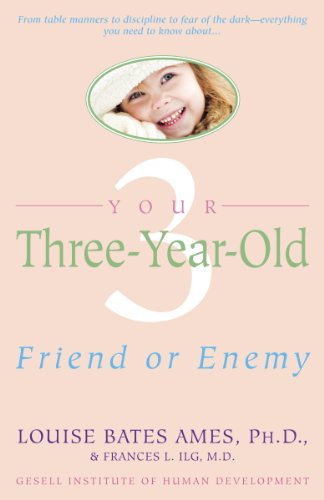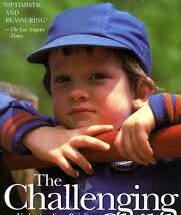
Your Three-Year-Old: Friend or Enemy by Louise Bates Ames and Frances L. Ilg
Introduction
Your Three-Year-Old: Friend or Enemy by Louise Bates Ames and Frances L. Ilg is a comprehensive guide for parents navigating the challenging yet rewarding age of three. This book delves into the developmental milestones and behavioral patterns of three-year-olds, providing practical advice and reassurance for parents.
Developmental Milestones
At age three, children go through significant changes in terms of cognitive, emotional, and social development. These milestones are crucial for parents to understand and support their child's growth.
Cognitive Development
Three-year-olds begin to develop better memory, reasoning skills, and a more extensive vocabulary. They can follow more complex instructions and start to engage in imaginative play.
Emotional Development
This age can be challenging as children learn to express their emotions. They may have frequent mood swings and find it difficult to regulate their emotions.
Social Development
Socially, three-year-olds start to engage more with peers, learn to share, and develop early friendship skills. However, they can also be possessive and struggle with sharing.
Behavioral Patterns
Understanding the typical behavioral patterns of three-year-olds helps parents manage expectations and respond appropriately.
Independence vs. Dependence
At this age, children often oscillate between wanting to be independent and needing reassurance from their parents. This can result in behaviors that seem contradictory.
Tantrums
Tantrums are common as three-year-olds struggle to cope with frustration and disappointment. Parents can help by staying calm and providing consistent boundaries.
Imagination
Three-year-olds have vivid imaginations, which can lead to creative play as well as fears of imaginary creatures. Encouraging positive imaginative play is beneficial.
Practical Advice for Parents
Louise Bates Ames and Frances L. Ilg provide a wealth of practical advice to help parents navigate this stage. Here are some key points:
| Key Point | Description |
|---|---|
| Consistency | Maintain consistent routines and rules to provide a sense of security for your child. |
| Positive Reinforcement | Praise and reward good behavior to encourage repetition of positive actions. |
| Patience | Practice patience and understanding as your child navigates their emotions and behaviors. |
Managing Challenging Behaviors
It's important to approach challenging behaviors with a calm and consistent strategy. Understanding that these behaviors are part of normal development can help parents remain patient.
Setting Boundaries
Clear and consistent boundaries help children understand expectations and feel secure. It's important to enforce these boundaries calmly and firmly.
Encouraging Independence
Encourage your child's independence by allowing them to make choices and try new things within safe limits. This boosts their confidence and sense of autonomy.
Emotional Support
Providing emotional support is crucial. Listen to your child's feelings, validate their emotions, and offer comfort when needed.
Conclusion
Your Three-Year-Old: Friend or Enemy is an invaluable resource for parents. By understanding the developmental stages and behaviors typical of three-year-olds, parents can better support their child's growth and navigate the challenges of this age with confidence.
For more insights and resources, visit our website and check out our blog.



